This is a guest post by our new monthly contributor, Will Boucek, a former college tennis player from Austin, with over 20 years of experience playing and coaching. Will specializes in doubles and was 4.5 men’s and mixed doubles champion in Texas in 2017. Fascinated by the strategy of doubles, Will shares his valuable insights on his website The Tennis Tribe.
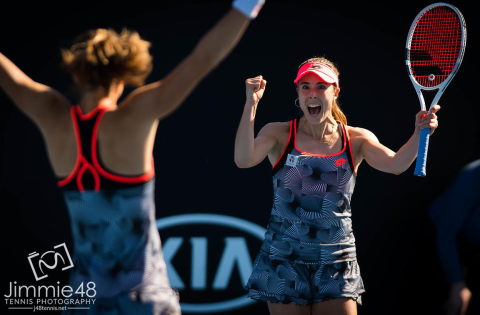
If you’re like most doubles players, you probably like to hit winners, especially from the net. Winners are great. They feel good to hit. They look impressive to spectators, and they deflate the other team.
Most points in doubles, however, do not end with a winner. They end in an error (forced or unforced). So we can actually finish a match with less winners than our doubles opponent, but if we win the error column, we’ll likely win the match.
Today I’m going to show you three things you should start doing to get on the right side of error column in doubles. Start implementing these strategies and you’ll start winning more doubles matches, which feels a lot better than hitting a winner 😉
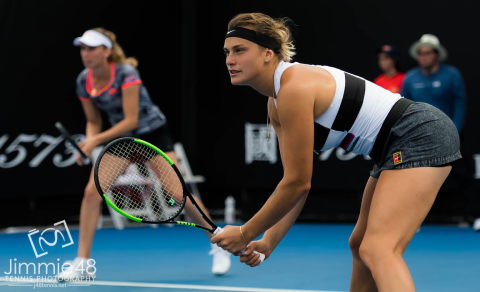
1. Change your positioning
The first, and possibly easiest, way to force errors from your opponent is to change your positioning on the court. Every time your opponent hits a shot, they’re going to adjust where and how they hit based on your position.
Let’s look at an example. In a conventional doubles formation, the returner, has an easy crosscourt return. If my partner and I switch to the I-formation, then the opponent now has two options, both more difficult than the easy crosscourt return.
- They can still hit crosscourt, but they will have to hit a very difficult angle to get it by my partner at the net.
- They can hit down the line, which is a lower percentage shot with a shorter court and higher net.
And a lot of times, they choose option 3… they miss!
Think about how to change your positioning before the point starts, and during a point. Force your opponent to hit the lower percentage shots, and put pressure on them at the net. Changing your position throughout the match will make it difficult for your opponent to get into a rhythm, which will get you tons of free points.
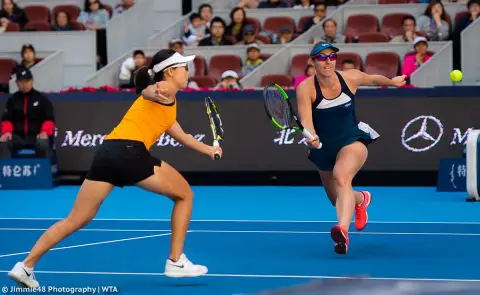
2. Change your movement
Similar to positioning, how and where you move on the court dictates how and where your opponent hits.
One of my favorite doubles strategies is to poach early when my partner is serving, and give the returner the entire doubles alley (on 1st serves only). They usually miss at least 3 out of 5, which means I win 60% of the points.
A problem I see with most doubles players, is that while they may move well forward and backwards at the net, they almost never move laterally. Adding lateral movement to your net game is a great way to force the opponent to change the direction of their shot and and make them uncomfortable.
You will get passed up the line some, but you’ll force a lot of misses too. Experiment with your lateral movement in practice matches to see what works best for you.
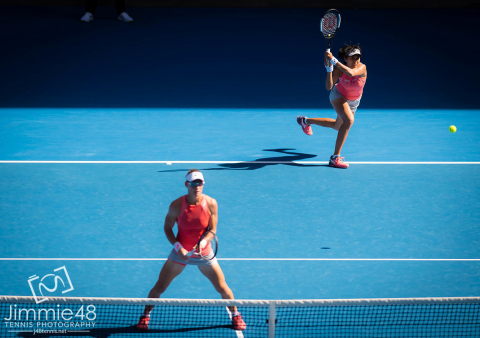
3. Change where you hit the ball
Of the three strategies, this is the most difficult. It often means changing the direction of the ball. However, with practice, this tactic will help you find your opponents biggest weaknesses, and force lots of errors.
Here are some of my favorite places to hit the ball in doubles to create an error.
- Deep to the backhand – Most players backhand is their weaker shot, and hitting deep in the court will get the opponent on their heels. You’ll also set up your net player to move laterally and poach.
- At the net players feet – This works great when returning against a serve-and-volley player, or if all four players are at the net. Hitting at their feet forces them to pop the ball up, which is a difficult shot. If they do get it back, you can attack the next shot.
- To the weaker player’s backhand volley – This strategy is certainly underutilized. When both opponents are at the net, or you have a short ball, why not hit at the weakest shot on the other side of the net. Combine this with the last tip to hit low to the backhand volley to make their life even more difficult.
- Down the middle of the court – Most doubles teams don’t get to practice together much. The best area to exploit this lack of team chemistry is the middle of the court. Returning and hitting groundstrokes low over the center net strap is one of the best shots you can hit in doubles.
Pro Tip: Start with the easiest shots for you, and work your way up to the more difficult ones. For example, if you can’t hit enough topspin to hit at the net player’s feet, then at least get it to the backhand volley.
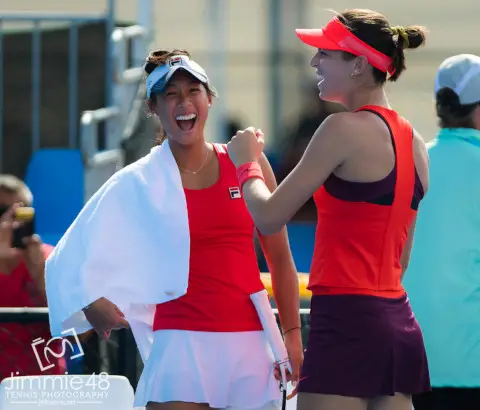
The key to winning doubles
As you can see, in doubles, where you hit and move is far more important than how you hit. This is less true in singles. In doubles, I’d rather take 5 MPH off my first serve if it means making 5% more serves with increased accuracy.
So next time you go out for a practice match, forget hitting big forehands, and monster serves. Instead, focus on your positioning, movement, and where your hitting. That’s where the wins are on the doubles court.








This is great, thanks Will!
Thanks Annette!
Hope it helps 🙂